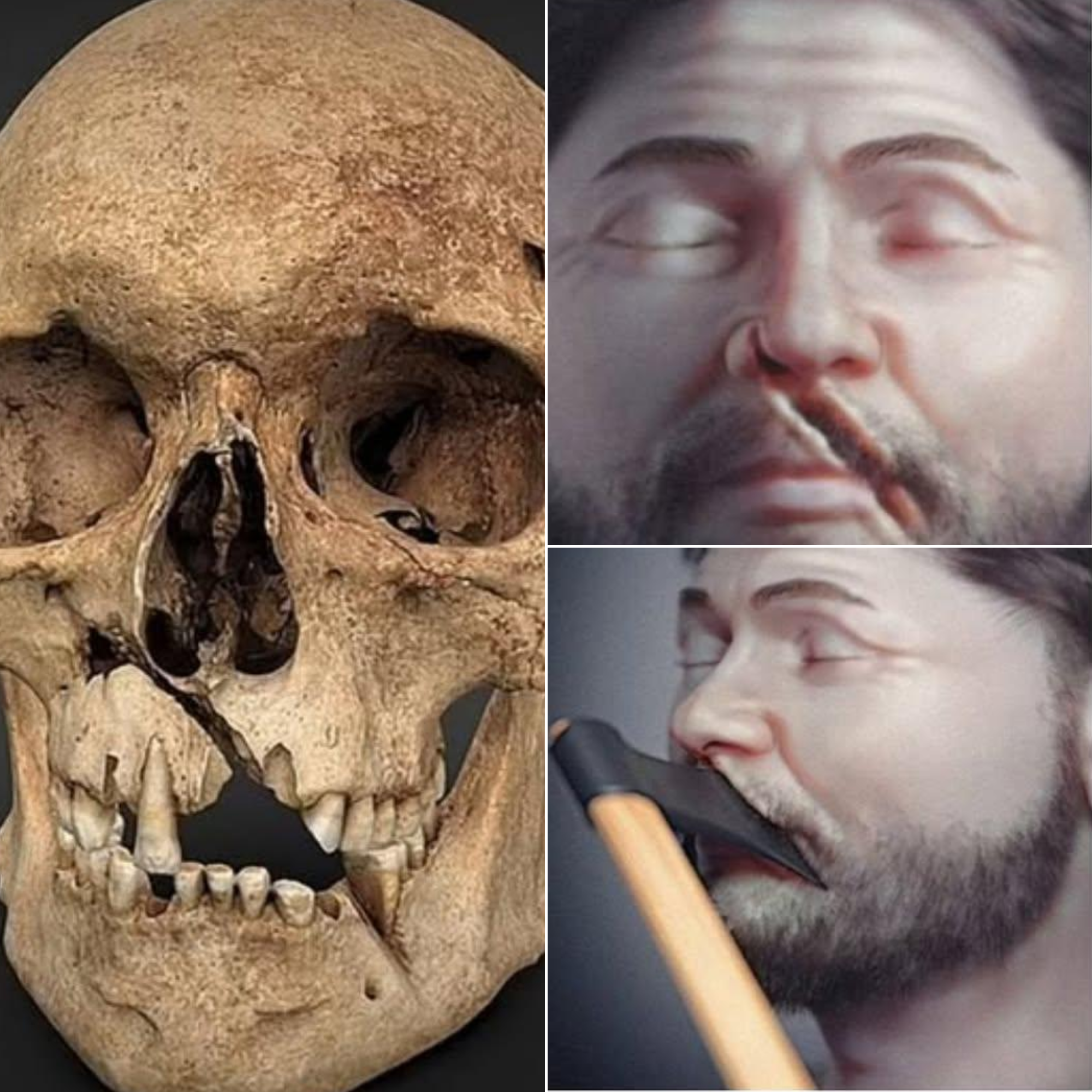⚔️ THE FORGOTTEN KNIGHT: A 14TH-CENTURY WARRIOR RETURNS FROM THE GRAVE
He has no name.
Yet for the first time in 664 years, he has a face.
Archaeologists working on the mass graves outside the medieval city walls of Visby have just unveiled the most haunting facial reconstruction ever produced from the infamous Battle of Visby, fought on 27 July 1361 between the farmers of Gotland and the invading army of King Valdemar IV of Denmark.
Skeleton VR-1734 (catalogue designation) was found face-down in a trench with 217 other men, women, and children, all hastily buried after one of the bloodiest afternoons in Baltic history. When the team from Uppsala University and the Swedish History Museum lifted his skull this summer, they knew immediately he was different.
The man was approximately 35–45 years old, 5’10” tall (tall for the era), broad-shouldered, and built like a siege engine. His bones told a lifetime of stories:
– A fully healed sword cut across the left cheekbone that would have taken off half his face had it been a centimeter deeper.
– A shattered right forearm, reset crooked, suggesting he fought on after the break.
– Multiple rib fractures, some old, some fresh (one still showed the greenstick splinter of a poleaxe blow delivered hours before death).
– And most telling: the inside of his pelvis bore the unmistakable wear patterns of a man who had spent decades in plate armor and mail, riding to war.
But the real shock came when forensic artist Oscar Nilsson began the reconstruction.
Using CT scans, tissue-depth data from 14th-century Nordic populations, and DNA-informed pigmentation (dark blond hair, grey-blue eyes, fair skin weathered to leather by sun and salt), Nilsson sculpted a face that feels less like history and more like someone who just stepped out of the mist.
The result is devastating.
He stares straight ahead with the calm, thousand-yard stare of a man who has seen the absolute worst of his century and kept riding anyway. A faint white scar slices from left ear to jaw. His nose is slightly crooked (broken twice and never set properly). There is exhaustion etched around the eyes, but also an unshakable resolve, the kind that makes you understand why medieval chroniclers wrote that some knights “fought like devils even when the day was lost.”

His armor fragments tell the final chapter. The coat-of-plates found crushed around his torso bears the faint ghost of a heraldic lion rampant, the paint long gone but the indentations still visible under raking light. Local historians are now combing the rolls of the Teutonic Order and the Livonian Brothers of the Sword for a match. Early candidates include a mysterious “Sir Henrik of Löwenklau,” listed as missing after Visby in a 1362 Hanseatic ledger, or possibly a high-ranking member of the Vitalienbrüder (the proto-pirate “Victual Brothers”) who fought as mercenaries that summer.
The reconstruction was unveiled yesterday in a hushed hall at the Gotland Museum. Grown archaeologists (men and women who have spent careers among the dead) openly wept. One whispered, “He looks like he’s waiting for orders that will never come.”
Social media did what it always does: within hours #TheForgottenKnight was trending worldwide. Artists are already painting him into epic scenes. Children are asking parents if he was a real King Arthur. And in Visby itself, flowers (white roses and simple iron crosses) have begun appearing at the mass grave memorial.
Oscar Nilsson, who has reconstructed everyone from Stone Age shamans to Richard III, says this one felt different.
“I kept thinking he was watching me,” Nilsson admitted. “Every time I added another scar, I felt I owed him an apology for disturbing his rest.”
He has no name yet.
But after six and a half centuries in the dark, he finally has a face.
And for the first time since that blood-soaked July afternoon in 1361, the Forgotten Knight is looking the living world straight in the eye, daring us to remember what courage once cost.
Somewhere beneath Gotland’s quiet fields, 217 other souls still wait their turn.
But tonight, one of them rides again.





